
(PMOI / MEK Iran) and (NCRI): International call to stop execution. UN and member states must take immediate action to save the lives of death row prisoners.
On Monday, three people were given the death penalty at an Iranian prison. Over the past 10 days, at least 15 additional people were executed in various prisons, creating a pace of executions that is guaranteed to continue, if not intensify, with the inauguration of the regime’s president, Ebrahim Raisi, this week.
November 2019 uprising
The new president has been the head of the Iranian regime’s judiciary since March 2019. He oversaw a huge escalation in the use of the death penalty by a government that was already notorious for having the world’s highest annual rate of executions per capita.
Following early conflicts that led to the deaths of about 1,500 peaceful protestors in November 2019, Raisi embarked on a months-long campaign of systematic torture.
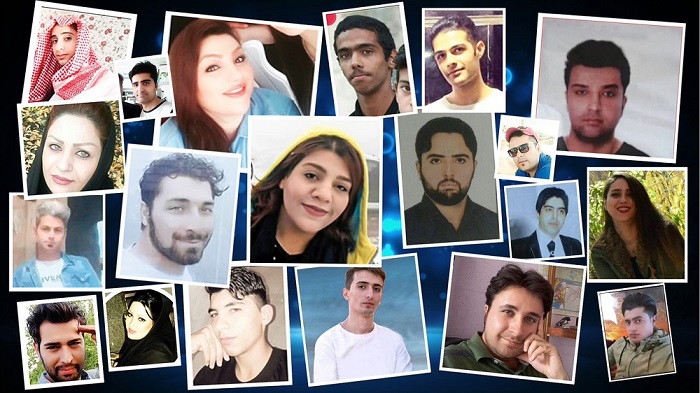
(PMOI / MEK Iran) and (NCRI): Reuters reported over 1500 have been killed, 27 children, during Iran protests that started mid-November.
The 1988 massacre
Raisi made a significant contribution to the regime’s legacy in 1988 when he proudly took a leadership role in the massacre of political prisoners that followed the regime’s founder, Ruhollah Khomeini’s, fatwa.
That religious decree notably targeted The People’s Mujahedin of Iran (PMOI / MEK Iran), which stated that involvement in an anti-theocratic group constituted evidence of “enmity against God,” for which a person should be murdered without mercy.
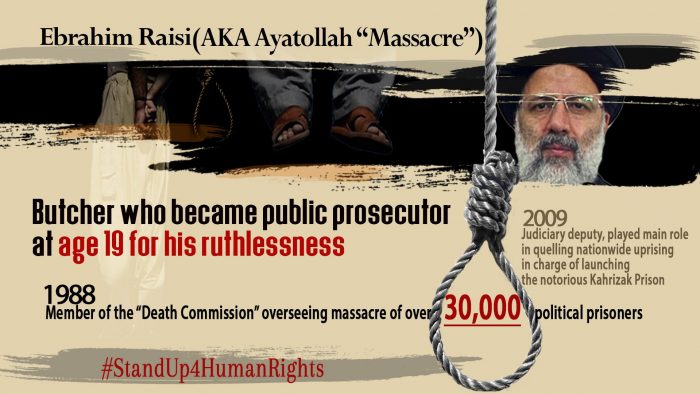
(PMOI / MEK Iran) and (NCRI): Ebrahim Raisi, a mass murderer of MEK activists and political prisoners appointed as head of the Iranian regime’s Judiciary.
Raisi and other members of the country’s “death commissions”
Despite the fact that it has become increasingly clear that Raisi and other members of the country’s “death commissions” carried out over 30,000 executions in just three months, Raisi has continued that approach in recent years.
Those penalties were frequently the result of two-minute interrogation sessions. The majority of the victims were political detainees who had already served their sentences when the fatwa was issued.
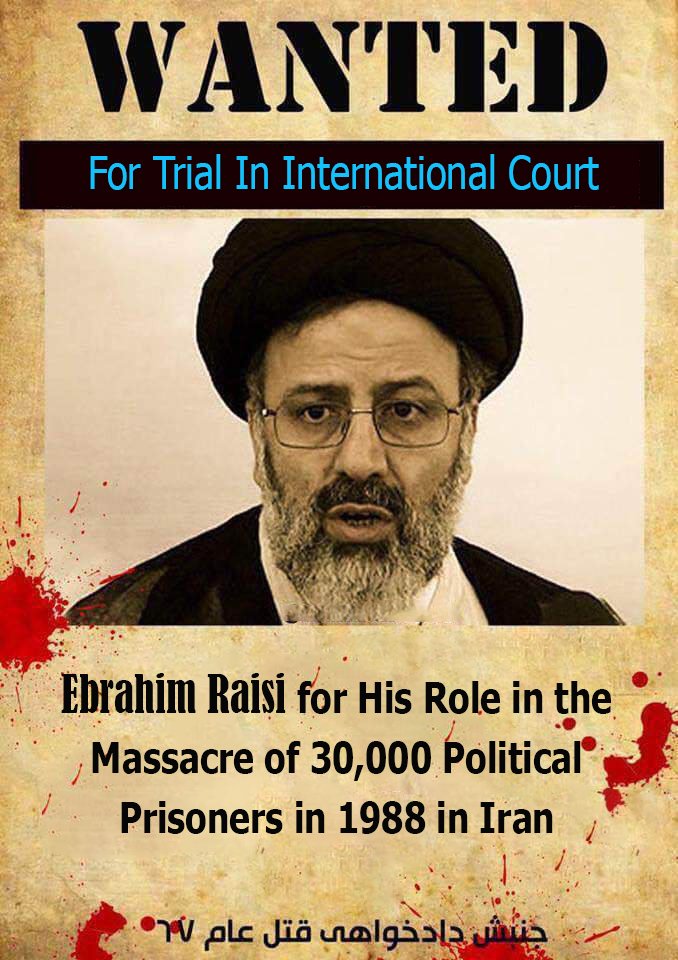
(NCRI) and (PMOI / MEK Iran): Taken from the Social Media, widely used during campaigns upon Raisi’s appointment to the highest Judicial position under the mullahs’ rule.
Iranian regime’s efforts to repress opposition
Since then, the Iranian regime’s efforts to repress opposition have been characterized by contempt for its own standards. Deputy Judiciary Chief Gholamhossein Mohseni Ejei’s authority was unilaterally and arbitrarily elevated by the regime’s Supreme Leader Ali Khamenei during Raisi’s term as judiciary chief, giving him the right to execute capital sentences alongside his higher official.
Ejei served as the judiciary’s delegate to the Intelligence Ministry from 1985 to 1988, and he was implicated in the massacre of political detainees, as well as laying the groundwork for long-term opposition persecution. He was involved in the “chain murders,” assassinations of Iranian intellectuals and dissidents, in the years that followed. In 2009, he and Raisi both called for the violent suppression of demonstrators, and Ejei was sanctioned for his role the following year.
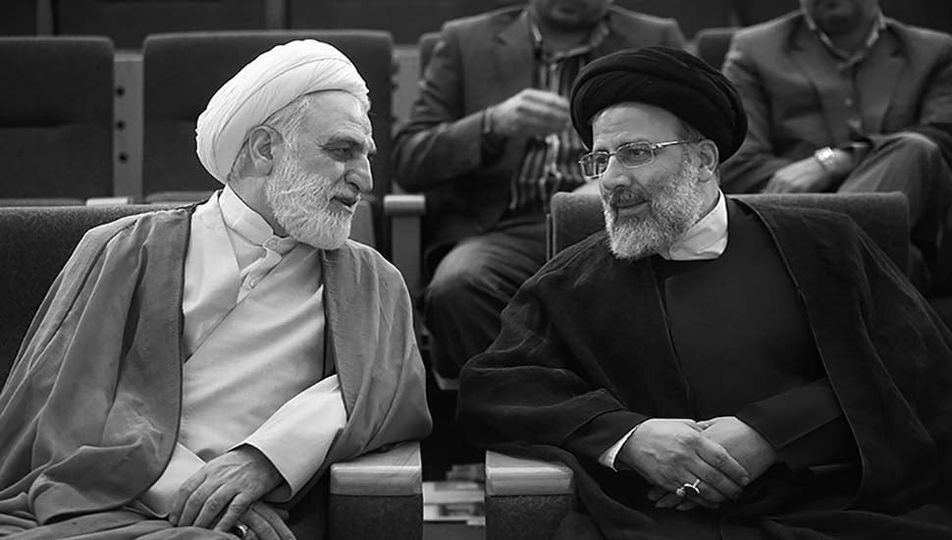
(NCRI) and (PMOI / MEK Iran): Khamenei completed the project to consolidate his regime, putting in place Ebrahim Raisi and Mohseni – Eje’i becoming President and Judiciary Chief.
Khuzestan uprising
Large-scale public gatherings, such as those that erupted lately in Khuzestan Province in reaction to water shortage protests, are attracting an increasing number of demonstrators. To deal with the mounting unrest, Raisi and Ejei are likely to employ the same tactics utilized in the 2019 crackdown and the 1988 massacre.
To avoid a tragedy like this, the global community must act. For years, opponents of the Iranian regime have called for a formal, international investigation into the massacre and other crimes, with the potential of charges being filed at the International Criminal Court against major perpetrators.
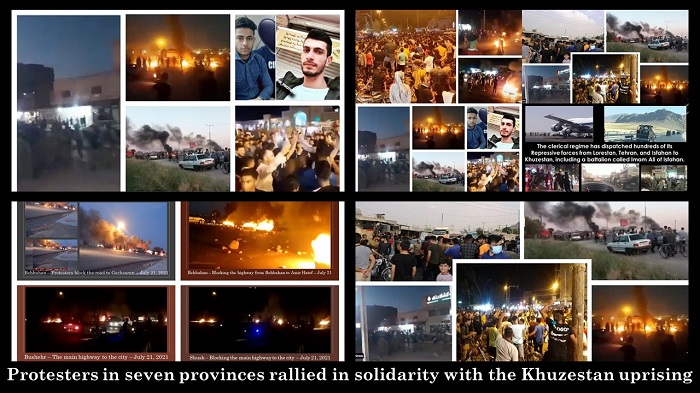
(NCRI) and (PMOI / MEK Iran): Protesters in seven provinces rallied in solidarity with the Khuzestan uprising 22.07.2021.
MEK Iran (follow us on Twitter and Facebook)
and People’s Mojahedin Organization of Iran – MEK IRAN – YouTube
